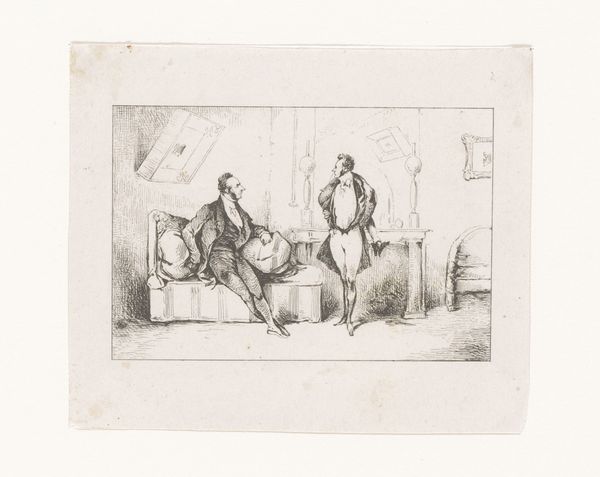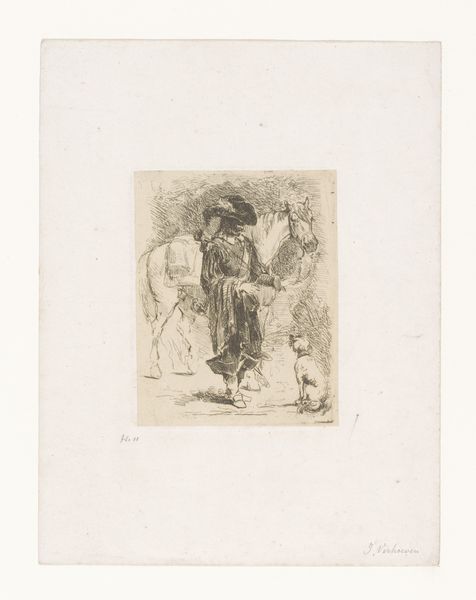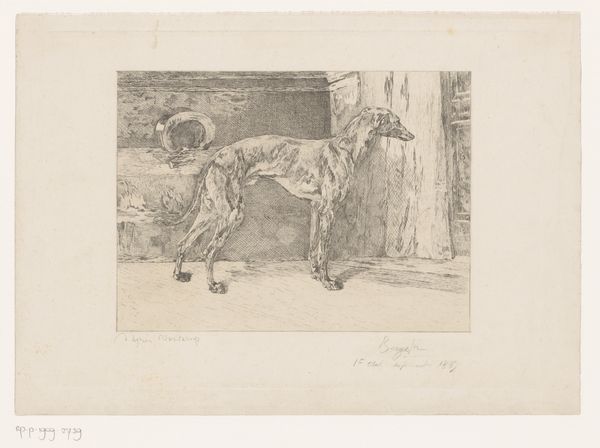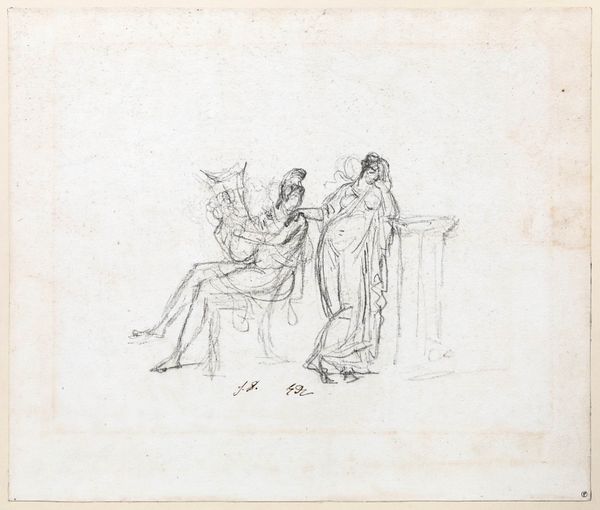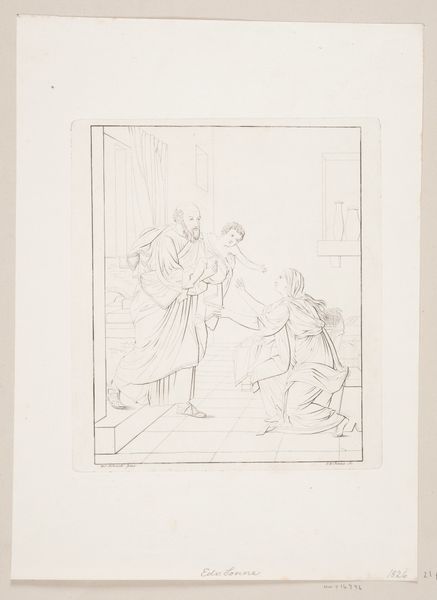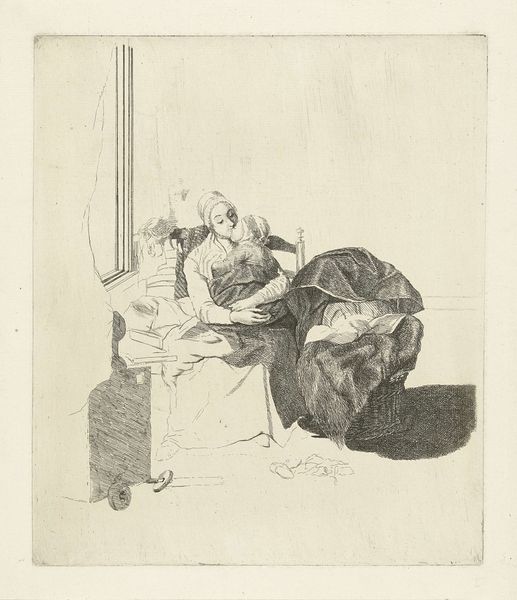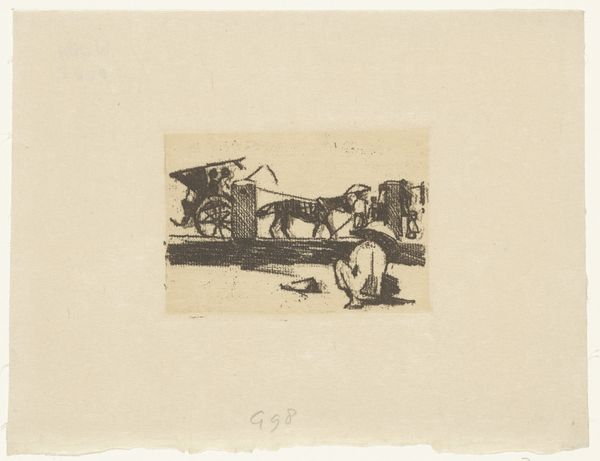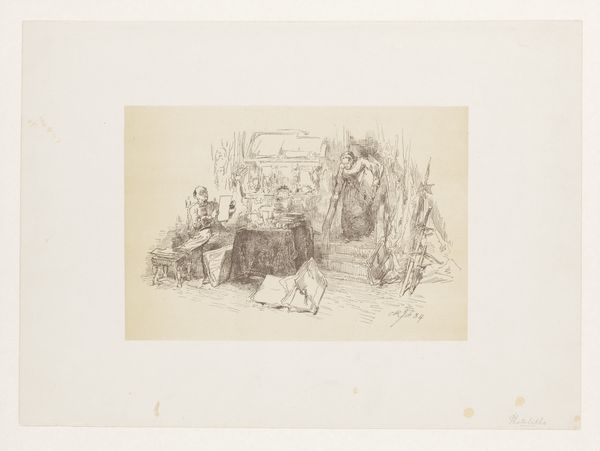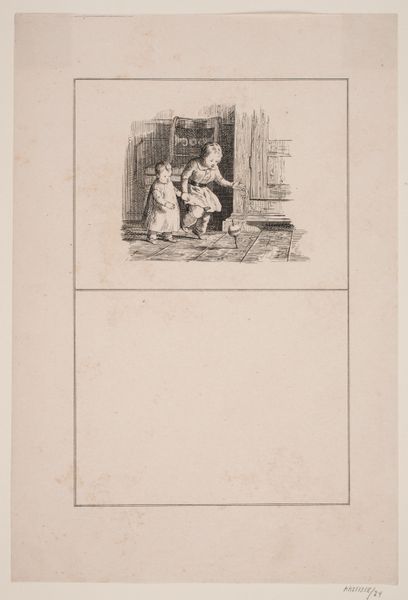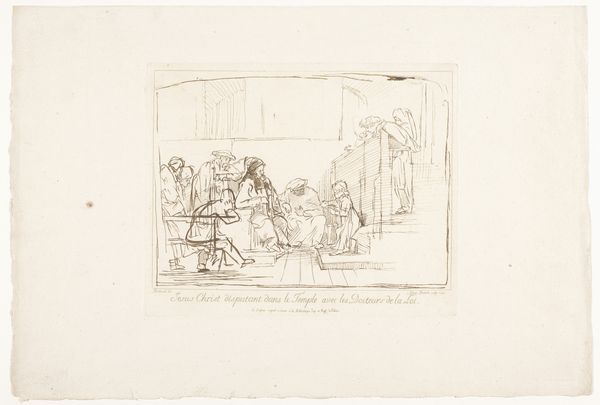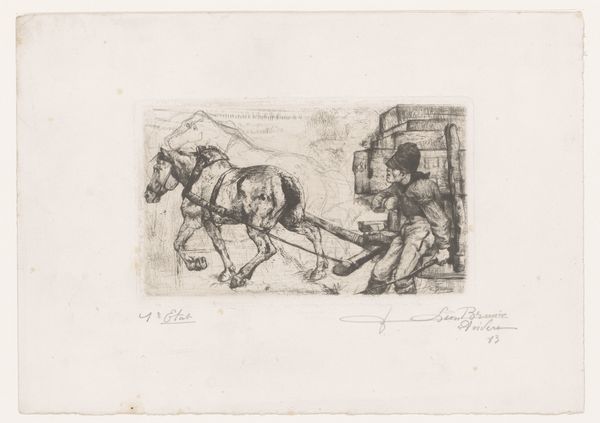
drawing, print, etching
#
drawing
# print
#
etching
#
pencil sketch
#
landscape
#
genre-painting
Dimensions: 130 mm (height) x 172 mm (width) (plademaal)
Curator: Let's turn our attention to Edvard Petersen's etching, "En tørvebonde ved en fjællevogn," created in 1872, currently residing at the SMK. It translates roughly to "A Peat Farmer by a Field Wagon". Editor: Well, hello to the hardworking! The piece gives me such a hushed, gray day kind of feel. There's a loneliness there, wouldn't you say? A kind of stoic solitude in the daily grind. Curator: Indeed. Considering its time, Petersen likely aimed to depict rural life and labor. Etchings, drawings and prints such as this were often vehicles for communicating class identity and perhaps a critique of the social stratification of 19th-century Denmark. What does the man's relationship to the land seem to convey? Editor: It's intimate, wouldn’t you say? Look at the weight on the donkey; they are burdened by labor. They are one with the earth in their struggle. It's honest, almost reverential. Makes you wonder about the artist's perspective, doesn't it? Did he feel connected to that life or was he observing from a distance? Curator: Precisely. We can consider the artwork as a lens through which Petersen and his audience viewed class differences, labor and what it means to be a cog within the Danish economic engine. Who benefits? Who suffers? It might even reflect growing industrialization and displacement felt by many at the time. Editor: You know, it’s easy to forget the sheer physicality of existence, particularly from centuries prior. The quiet dedication; not just of the man but the donkey...the tug of it all. And etched so simply, so delicately; such a beautiful dance. Curator: And to that point we return to the idea of a silent partnership within a machine. While we can ponder the weight of societal imbalance through gender, racial, or even political strata, it’s good to keep in mind those daily negotiations to ensure progress. Editor: It really makes you ponder the echoes of our past lives and how closely tied our own struggles remain. Curator: Thank you. Perhaps, this helps visitors engage critically not only with the artwork but its enduring narratives, too.
Comments
No comments
Be the first to comment and join the conversation on the ultimate creative platform.

